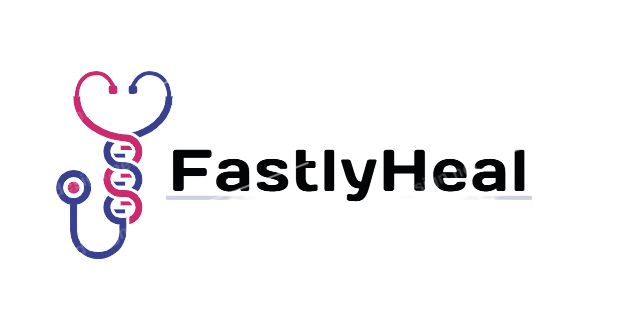Insect bites can be a straightforward thing to solve in some people, but in those who are allergic, it can be a dire situation that requires emergency medical assistance.
On the other hand, the wasp bite area is significant to consider when planning treatment. A sting in the leg is not the same as in the eye. Pharmacological treatments usually include adrenergic, corticosteroid, and anti-allergy drugs, but you can also resort to some very effective home treatments.
You can rest assured that in this FastlyHealarticle, you will find everything you need to know about how to reduce inflammation of a wasp sting in the eye.
Table of Contents
How to reduce swelling from a wasp sting
A wasp is an insect that has poison. The inflammation that occurs before its bite can be mild to moderate or trigger a severe reaction of the body in those people who are allergic to this poison.
A person who knows they are allergic to wasp stings should always have the medication they need to slow down the reaction triggered in the body. This is an epinephrine drug (like adrenaline made by the body, but artificial). To obtain it, a medical consultation is necessary to prescribe it and teach its use. Its application is essential to limit inflammation and reactions in an allergic organism.
On the other hand, the swelling after a wasp sting in non-allergic people is usually self-limited. To help the inflammation from the bite of this insect disappear faster, the following tips should be taken into account:
- Remove the stinger carefully to squeeze the bag containing the poison. If it is not exposed, you can remove a splinter by gently scraping the area with a clean needle or knife.
- Use soap and water to clean the area.
- Apply cold.
- Do not move the damaged area too much to prevent the circulation from spreading the poison.
- Remove whatever may compress the area.
Antiallergics can be administered, such as diphenhydramine, or corticosteroids, such as betamethasone. If the person thinks that he is allergic or suffers from other diseases, it is advisable to quickly go to a health center.
How to cure a wasp sting in the eye
The eye is a super sensitive and delicate organ, as are its structures. That is why a wasp sting in the eye is a very particular situation to which special attention must be paid. The problem is very different if the bite is near the eye, on the eyelid, or in the same regard. Let’s see it next:
Stinging of the eyelids
The skin of the eyelids is one of the thinnest in the body, and the fatty tissue underneath is super lax. That is, it is softer than elsewhere. That is why a bite in this area will quickly become inflamed and spread to neighboring skin regions with some ease.
This situation is more noticeable in people who are allergic because, in addition to the sting itself and the reaction caused by the venom, fundamental inflammation mechanisms are set in motion by an exaggerated response from the allergic person, which may consist of:
- Excessive swelling
- Redness
- Heat in the area.
- Itch.
- Burning and pain.
In addition, an allergic person is at risk of other severe reactions such as:
- Inflammation of the respiratory tract with shortness of breath (mouth, tongue, throat, larynx, bronchi).
- Impaired heart function, rapid heart rate.
- Hypotension
- Loss of consciousness
- Nausea, vomiting
- Diarrhea.
- Abdominal pain.
Sting in the eye
The bite in the eyeball is a much rare situation, but possible. In this case, the symptoms can be:
- Very severe pain
- Blurry vision.
- Tearing
- Inflammation of the eyelid and different structures of the eye.
- Eye redness
- Inflammation of the nerve that allows sight.
- Loss of vision
This is why it is an urgent situation that requires an urgent visit to an ophthalmology specialist.
How to reduce inflammation from a wasp sting
If the person who suffered the sting is allergic or directly in the eye, the professional consultation should not be delayed.
If the bite is on the eyelid, you can take into account the following tips to reduce inflammation of the area as quickly as possible:
Clean the area
As seen in the previous section, removing the stinger should be the first step so that the inflammation does not occur.
The area should then be thoroughly cleaned with soap and water to prevent other germs from the skin from entering the wound.
Apply cold
This step is essential to inhibit the effects of inflammation on the skin. Cold compresses or ice can be applied, but the latter is always wrapped in a cloth to avoid direct contact with the skin, since otherwise, a burn may occur due to excessive cold.
It should be applied cold and several times a day in the following days. Remember that the inflammation can go down, but as the tissues are lax, the inflammation can also spread quickly to the rest of the face.
Likewise, it is essential to avoid exposing yourself at that time and in the following days to heat sources such as kitchen appliances, heating, or the sun, since this favors inflammation.
Drugs that can be given
Among the medications that a professional can advise you are:
- Antiallergics.
- Corticosteroids.
Of course, medical supervision is essential since the doses are not for everyone.
Epinephrine is a particular case. It is the drug indicated for patients with allergies, and they must know how to use it before suffering a reaction of this type because the response can be severe and swift. That is why it is advised that if a person has suffered a severe reaction to a sting or suffers from significant allergies, they go to a specialist to receive the necessary advice to deal with an emergency.
Light eating
Although it is not usually taken into account, you must eat easily digested foods that do not overload your body.
If your body has to digest meat, processed foods, foods rich in fat, alcohol, etc., it cannot reduce inflammation in the area affected by the bite.
The foods recommended for the days after the bite are: whole grains (rice, wheat flour, corn, oats, quinoa, millet), vegetables, and seasonal fruits and legumes.
Likewise, it is advisable to avoid those foods that favor allergies, such as:
- Egg.
- Tomatoes.
- Strawberries.
- Honey.
- Fish and seafood.
Home remedies for an eye sting
Some substances are anti-inflammatory, and that can help reduce the swelling of the bite. Such is the case of:
- Turmeric: it is a potent anti-inflammatory and removes poisons from the body. Half a teaspoon can be added to meals or taken as an infusion.
- Calendula: it is a milder anti-inflammatory but very useful to apply directly to the skin affected by the bite.
- Aloe vera: due to its cold action, it helps soothe the inflammation in the area that suffered the sting. It is applied directly to the skin.
- Ginger: powdered ginger is softer than fresh root and is most useful in cases of significant inflammation. It also helps to relieve pain. It should be taken as an infusion: a cup of hot water with a pinch of powdered ginger, let it rest and be prepared up to three times a day.
How long does the inflammation last from a wasp sting?
This depends on several factors: if the person is allergic or not, the type of wasp, the area where the sting occurred, what was done at the time of the sting, if treatment was received soon, if a light diet was maintained subsequent days, etc.
In general, in a non-allergic person, it can take up to a week for the tissues to be defamed again, but it can take much longer in an allergic person.
This article is merely informative. At FastlyHeal .com, we do not have the power to prescribe medical treatments or make any diagnosis. We invite you to see a doctor in the case of presenting any condition or discomfort.
If you want to read more articles similar to How to reduce inflammation of a wasp sting in the eye, we recommend that you enter our Skin, hair, and nails category.

I am a Surgeon with a diploma in comprehensive ultrasound and surgical care residency, an area I am specializing in. During the exercise of my profession, I have realized the need for patients to know the diseases they suffer, and I can tell you that a large part of their complications is due to a lack of information. Being a health web writer allows me to transmit my experience, without borders, to all those readers eager for knowledge, educate them in the prevention of diseases and promote a healthy lifestyle.

